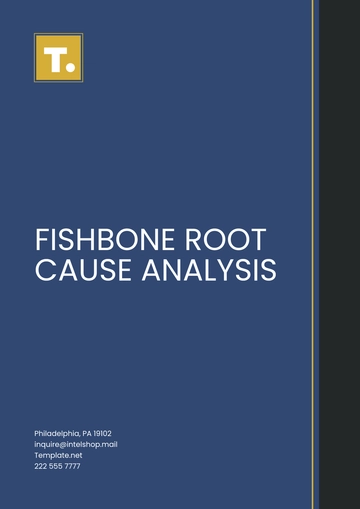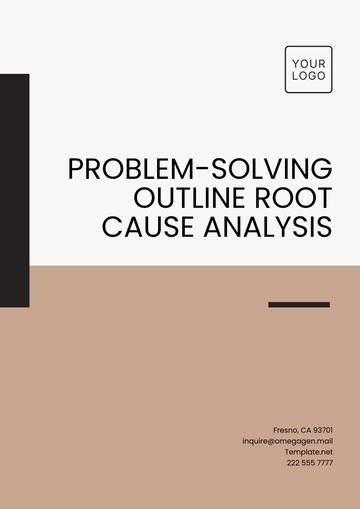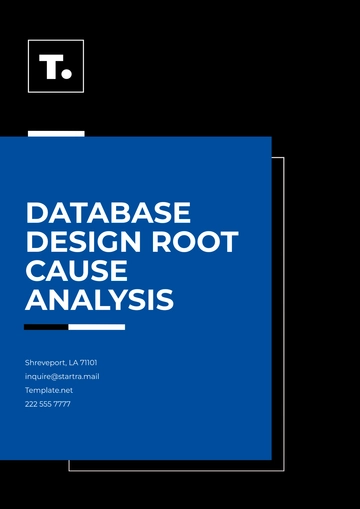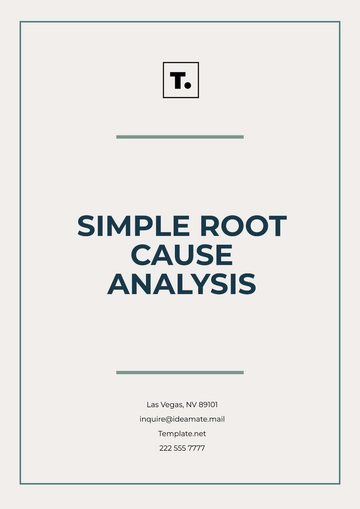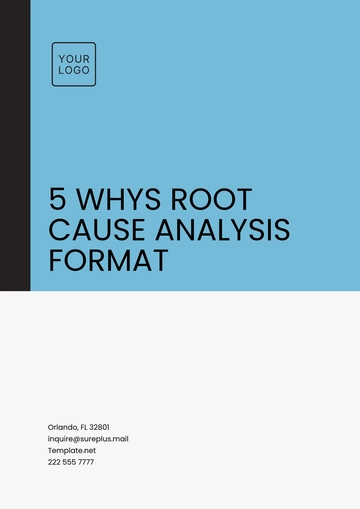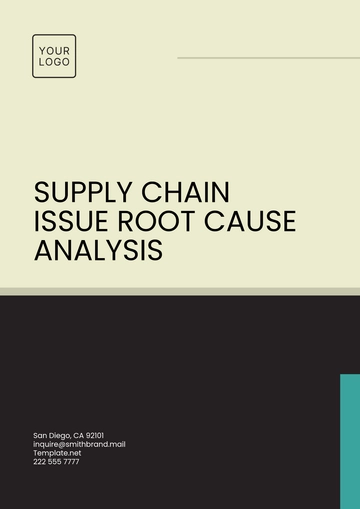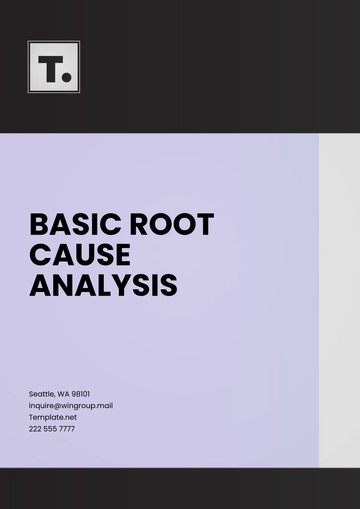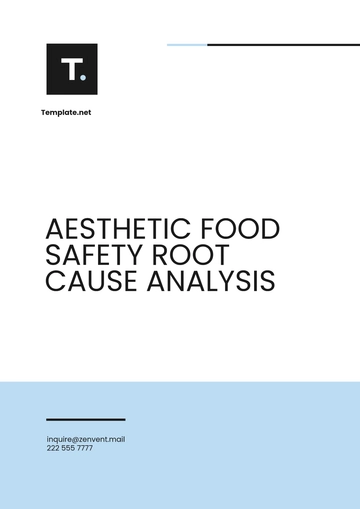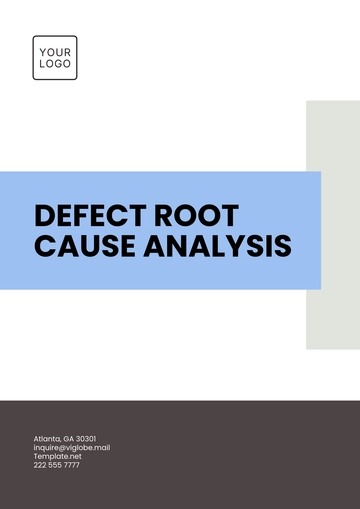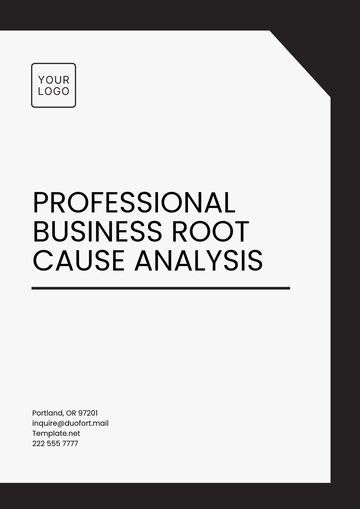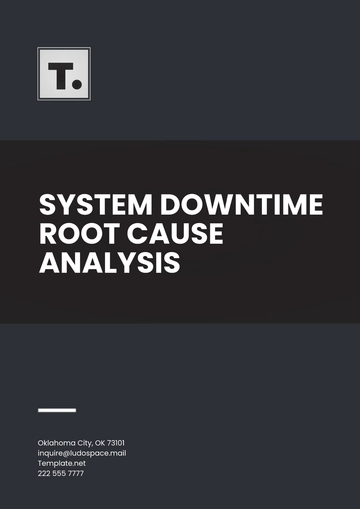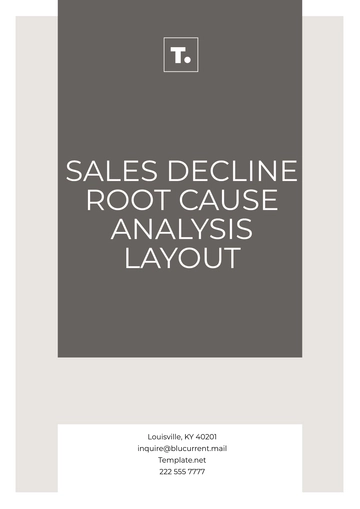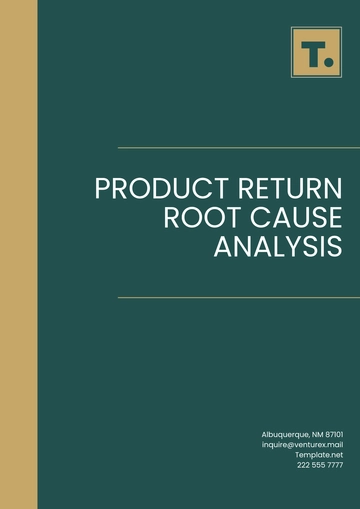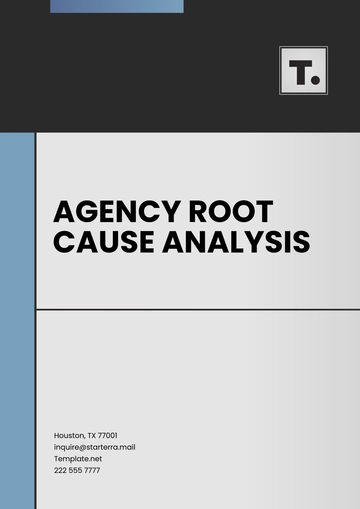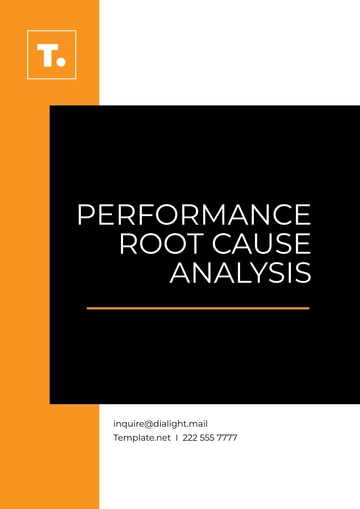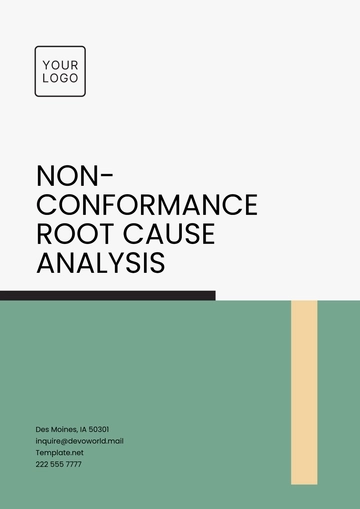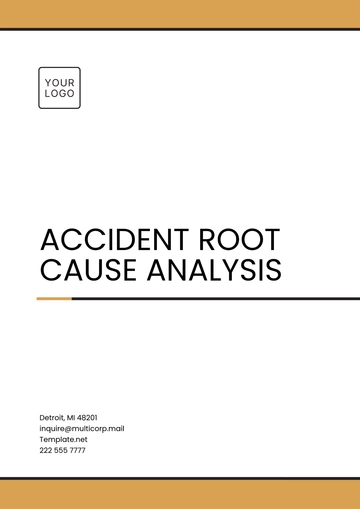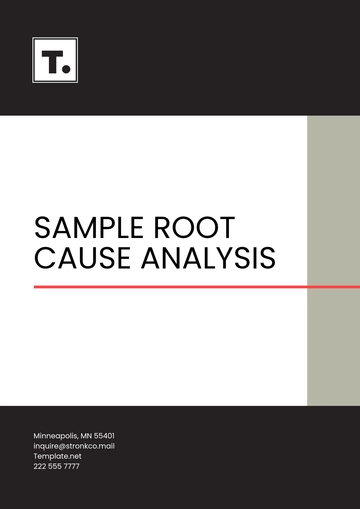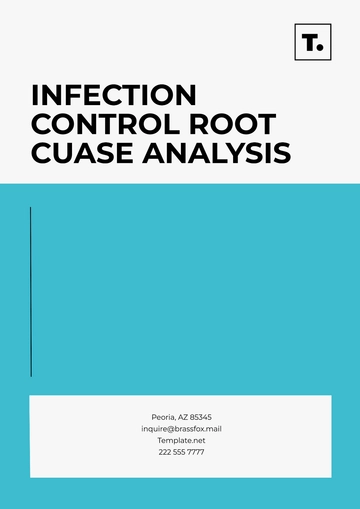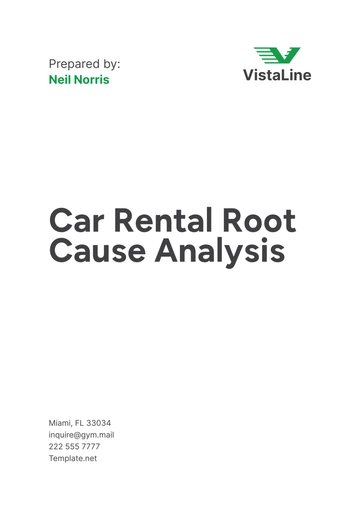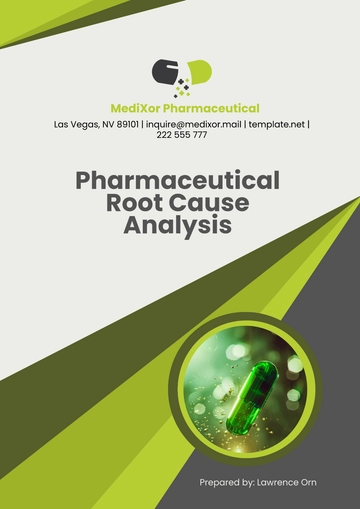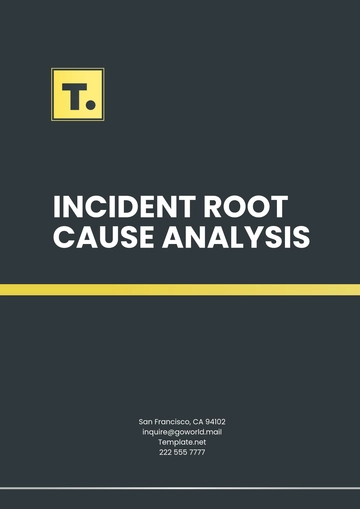Free Sales Analysis of Commission Payout Efficiency
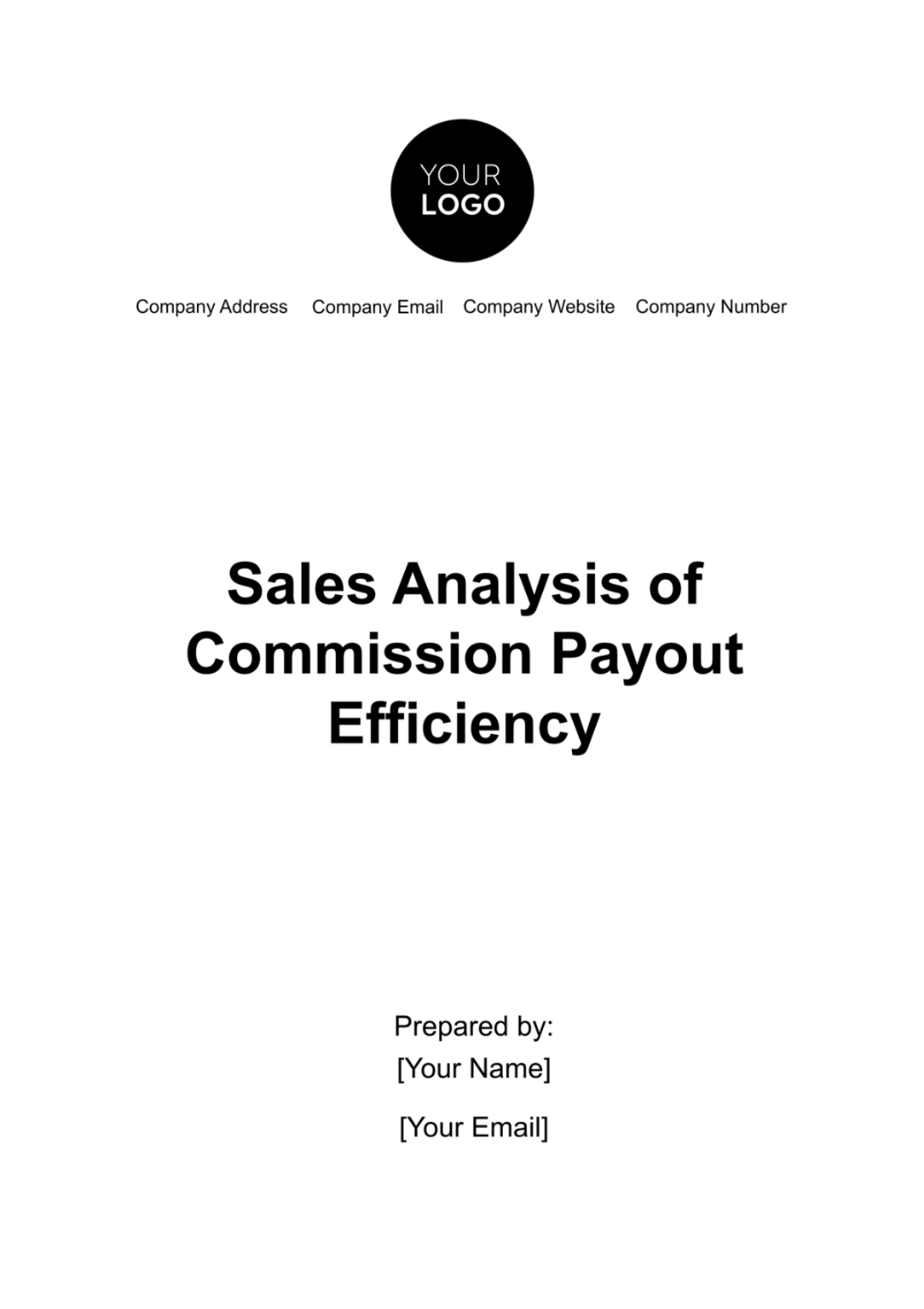
I. Executive Summary
Understanding the different financial outlays and their corresponding returns is essentially advisable. The bedrock of any organization's success, particularly in sales-driven sectors, lies in the careful calibration of remuneration models that inspire performance while safeguarding profitability. This executive summary offers a concise, yet comprehensive examination of [Your Company Name]'s commission structures, gauging their impact on our sales performance for the fiscal year 2052.
A. Objectives and Significance
Evaluating the efficacy of our commission-based incentive models in bolstering sales for the fiscal year [2052], with the sales domain being filled with fierce competition and ever-evolving dynamics, it is imperative to continually refine our remuneration strategies. This not only ensures optimal return on investment but also positions [Your Company Name] as an industry leader, both in terms of sales figures and employee satisfaction.
Recent research underscores the vital role commissions play in modern enterprises. Companies that periodically assess and recalibrate their commission structures outperform their peers by an average margin of [12%] in sales metrics.
B. Overview of Total Commission Payouts versus Total Sales
The fiscal year [2052] has been momentous for [Your Company Name]. A total outlay of [$4.5 million] in commissions was set against an impressive sales figure of [$40 million]. To contextualize this data, industry giant ProTechCorp reported a commission to sales ratio of [$1] to [$7.50] in the same year, indicating that our model is outpacing some of the leading players in the sector.
C. Initial Findings
For every dollar spent on commissions, [Your Company Name] is generating approximately [$10] in sales. This ratio, not only indicative of a robust commission structure, but also suggests a motivated and high-performing sales team. The Sales Efficiency Institute's annual report corroborates this trend, with businesses averaging a return of [$10] for every commission dollar.
In sum, this executive summary offers a glimpse into the connection between commission structures and sales performance. As we move forward, gathering these insights will be instrumental in steering [Your Company Name] towards new horizons of success and industry leadership.
II. Historical Commission Payout Data
The historical data of an organization can be used to improve and elevate [Your Company Name]’s standing. We can discern patterns, strategies, and decisions that have propelled our projections. This section delves into [Your Company Name]'s commission payout chronicles from the past few years, drawing correlations and insights that can inform future strategic decisions.
A. Year-over-Year Comparison
The year 2051 saw [Your Company Name] disburse a total of [$4 million] in commissions, a figure that correlated with sales amounting to [$36 million]. When juxtaposed against 2052's data—where commissions of [$4.5 million] spurred sales of $40 million—it's evident that the efficiency and return on commission payouts have seen commendable improvements. This [12.5%] increase in commission expenditure corresponded with an 11.1% growth in sales.
B. Changes in Commission Structures
Our commission framework has undergone strategic evolution over the years. Until the end of [2050], [Your Company Name] adhered to a flat commission rate. However, to galvanize our sales team into targeting larger accounts and to foster a more competitive environment, we transitioned to a tiered system in [2051]. This shift, borne out of a meticulous internal study and benchmarking against industry best practices, catalyzed an [11%] sales uptick in the ensuing years.
C. Correlation between Historical Commission Payouts and Sales Performance
Charting the data from [2050] through to [2052], a consistent narrative emerges: judicious modifications in commission structures positively influence sales growth. Every strategic recalibration was met with an uptrend in sales figures, affirming the efficacy of our decision-making processes.
A report from the Sales Incentive Council elucidated that businesses adept at aligning their commission structures with market dynamics and internal goals tend to experience [10-15%] higher sales growth. [Your Company Name]'s historical data resonates with this observation, underlining the prudence of our strategies and the potential for future growth.
III. Efficiency Metrics and Analysis
This section employs precise efficiency metrics to uncover the impact of our commission expenses on sales performance, providing a clear understanding of their role in [Your Company Name]'s financial strategies.
A. Key Metrics for Gauging Commission Payout Efficiency
Efficiency metrics are invaluable for translating complex data into understandable insights. At [Your Company Name], we focus on three key metrics to assess the effectiveness of our commission payouts:
ROI of Commission Payouts: This metric measures the return on each dollar spent on commissions, offering a quantitative assessment of profitability. |
Sales-Per-Rep: This indicator reflects the average sales performance per salesperson, helping to identify top performers and areas needing improvement. |
Sales-Per-Dollar of Commission: This metric reveals how commission expenditures directly influence sales figures, providing insight into the cost-effectiveness of our payout structure. |
B. ROI of Commission Payouts
The ROI for our commission payouts was an impressive [888%], a significant increase from [840%] in 2050. This suggests that for every dollar invested in commissions, [Your Company Name] generated [$8.88] in sales. This performance is notably higher than the industry average of [850%] reported by our analytics group, highlighting our competitive edge in commission strategy efficiency.
C. Cost of Sales Analysis, Including the Impact of Commissions
Commissions are a notable yet strategic part of our sales cost structure. Commissions accounted for about [11.25%] of our sales revenue. This means that for every [$100] in sales, we allocated [$11.25] to commissions. This rate is more favorable compared to the typical [12-15%] spent by others in our sector, as reported by the Financial Efficiency Institute.
This underscores the efficiency of [Your Company Name]'s commission strategy, confirming that while commissions are a significant expense, they are essential for driving sales and represent a sound investment.
IV. Comparative Analysis with Industry Benchmarks
This comparative analysis provides valuable insights into how [Your Company Name]'s commission structures and efficiencies stack up against prevailing industry norms, with the aim of identifying areas for strategic improvement.
A. Overview of Industry Standard
The commission standard in [2052] showcases varied structures across different companies. According to a [Global Sales Commission Council report], the majority of businesses in our sector maintain commission rates ranging from [10%] to [13%] of sales.
This data places [Your Company Name] near the industry median, confirming our competitive stance in attracting and retaining top sales talent.
B. Analysis of Commission Efficiency Relative to Industry Peers
A notable achievement is [Your Company Name]'s high ranking in commission efficiency. Our strategies and outcomes place us within the top 15% of companies in our sector. This high ranking demonstrates the effectiveness of our commission strategies in both motivating our sales team and ensuring a high return on commission expenditure.
C. Insights on Areas of Improvement or Competitive Advantages
While our position in the industry is strong, there is always potential for further growth. A key area for development lies in enhancing our top-tier commission structures. Market analysis reveals that leading companies are adopting dynamic, top-tier commission models that offer substantial rewards for surpassing certain sales benchmarks.
Implementing a similar structure could drive larger sales and strengthen our competitive advantage. Conversely, our current status as a leader in commission efficiency highlights our strengths and provides us with a strategic advantage in talent acquisition and market positioning.
V. Salesperson Performance Analysis
The effectiveness of a sales commission structure is inherently linked to the performance of the individuals responsible for generating those results. This section focuses on a detailed analysis of our sales team, highlighting the strengths and areas for improvement within our sales force.
A. Overview of Salesperson Performance Metrics
Our approach to evaluating sales performance is comprehensive, examining not only the total sales volume but also the commission earned and average deal size. This analysis helps us assess not just the frequency of closed deals, but also their quality and value, providing a complete picture of each salesperson's contribution.
B. Top Performers and Their Commission Efficiency
Our top performers, comprising the upper [10%] of the sales team, are remarkable in their efficiency. They account for [40%] of total sales while consuming proportionally less in commission. This group exemplifies the ideal balance between high sales volume and cost-effective commission expenditure, highlighting their critical role in driving profitability.
C. Areas of Improvement Among Lower Quartile Performers
The lower [25%] of our sales team, while contributing [10%] to total sales, draws [13%] from the commission pool. This discrepancy is not an indication of poor performance but rather an area ripe for development.
Through targeted training, mentorship, and potentially reassigning market segments or territories, we can enhance their performance and better align their contribution with commission expenses.
D. Adjustments to Commission Structure Based on Individual Performance
Our analysis suggests a need to consider a more nuanced, performance-based commission model. Envision a structure where achieving certain sales milestones unlocks higher commission rates, motivating each salesperson to exceed their previous achievements.
E. Actionable Steps for Enhancing Individual Sales Efficiency
Training Sessions: Regular training sessions focusing on advanced sales techniques and in-depth product knowledge can significantly improve deal closure rates. |
Mentorship Programs: Leveraging the experience of our top performers through mentorship programs can elevate the overall performance of our sales team by sharing skills, strategies, and insights. |
Sales Territory and Segment Re-evaluation: Aligning salespersons with territories or market segments that play to their strengths can lead to significant improvements in performance. Regular reviews and adjustments can exploit previously untapped potential. |
Sales Target Revision: Regularly revisiting sales targets to ensure they are challenging yet attainable can help maintain an optimal level of motivation within the team. |
VI. Recommendations and Conclusion
This section presents a comprehensive analysis of [Your Company Name]'s current commission structure and offers strategic recommendations for enhancing commission efficiency in alignment with market trends. The objective is to refine the commission model to bolster overall business performance in the upcoming years.
A. Summary Key Finding and Implications on Strategies
Our analysis indicates that [Your Company Name]'s commission model has effectively driven favorable outcomes, yielding a significant return on investment and aligning well with industry standards. Despite these successes, there is a need for adaptation to remain competitive.
A notable trend in the industry is the emphasis on high-value sales as a primary growth driver. Adapting our commission strategy to incentivize such sales appears promising and could significantly enhance our growth prospects.
B. Proposed Changes
In response to the trend towards high-value sales, we propose introducing an 'Elite Performance Tier' within our commission structure. This tier would offer an increased commission rate—suggested at [2%] above the current rate—for deals exceeding [$500,000]. This change aims to motivate the sales team to focus on securing larger deals. Preliminary simulations suggest this could increase annual sales revenue by an estimated [6-8%].
C. Strategies to Monitor and Enhance Commission Payout
To maintain and improve commission efficiency, it is essential for [Your Company Name] to implement a systematic approach for ongoing evaluation and adaptation. We recommend conducting bi-annual reviews of commission metrics to identify areas for improvement and allow for timely adjustments.
Additionally, an annual benchmarking exercise comparing our metrics against industry standards will help us stay competitive and adopt best practices. This balanced approach, combining forward-looking strategies with responsive adjustments, is crucial for sustaining and enhancing [Your Company Name]'s market leadership.
D. Conclusion
The analysis outlined in this document is designed to enhance [Your Company Name]'s commission structure By introducing an 'Elite Performance Tier' and providing larger deals, we anticipate a substantial increase in sales revenue for the upcoming years. Furthermore, the implementation of bi-annual reviews and annual benchmarking exercises will ensure that our commission strategies remain effective, agile, and competitive. The ultimate goal is to solidify our position as an industry leader, continuously striving for excellence in our sales strategies and commission models.
- 100% Customizable, free editor
- Access 1 Million+ Templates, photo’s & graphics
- Download or share as a template
- Click and replace photos, graphics, text, backgrounds
- Resize, crop, AI write & more
- Access advanced editor
Discover unparalleled insights into your sales performance with the Sales Analysis of Commission Payout Efficiency Template from Template.net. This editable and customizable template, powered by an advanced AI Editor Tool, empowers you to evaluate commission structures effortlessly. Optimize payouts, align incentives, and drive revenue growth with precision. Unlock the potential of your sales team today.
